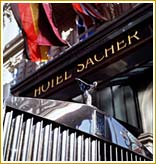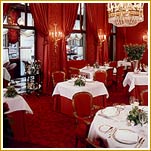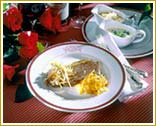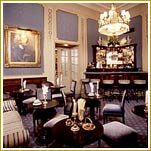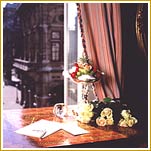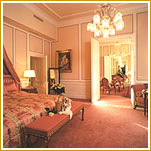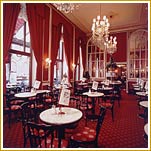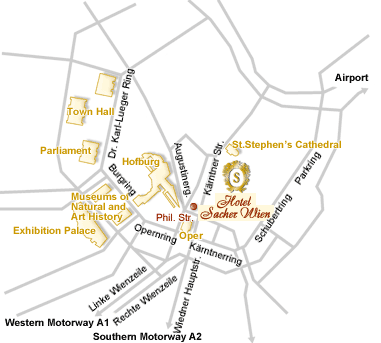 |
 |
|
| Your best 68 Hotels in the World | ||
 | |
 | |
| | Hotel Sacher Wien Philharmonikerstraße 4 A – 1010 Vienna |
| Description | |
| Luxury and tradition, perfect service and cordial staff, style and taste. This and much more is what you may expect in plenty if you stay at Hotel Sacher Wien. The Sacher is at once a venue of living tradition and contemporary Austrian life-style. It successfully merge the "old" and the "new" and thus create both a unique atmosphere as well as maximum comfort. It goes without saying that the technical facilities hotel guests are used to finding at luxurious hotels are all included in our offer. What is so special about this Hotel is that – thanks to its size – the staff is able to treat the guests to highly individual service and personally strive to make them feel as comfortable as possible! The Sacher is inseparably linked with Austria – the Austria of yesterday, today, and tomorrow. We therefore play a decisive role in shaping Austrian style and commencing new initiatives in the Austrian luxury hotel sector. | 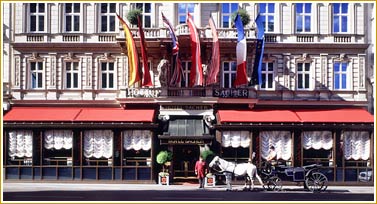 |
| History | |
| The Hotel’s history is dating back
more than a century. But our House’s sweetest off-spring is more than one
hundred and fifty years old: the world-famous Original Sacher-Torte. "Sacher": an institution closely linked to Austria’s history and more often than not also to that of Europe. Let’s go back to what not always were the "good, old days" which later on often became the objective of nostaligic and sentimental longings: the epoch of Viennese Biedermeier. – It was in 1832. The still omnipotent "Coachman of Europe", Wenzel Clemens Prince Metternich, at one point during that year issued the command to create a particularly delicious dessert for his spoilt, high-class guests. "But don’t get me into disgrace tonight". And all at a moment at which the chef-de-cuisine was lying on his sickbed! The order is passed on, only to end up with sixteen-year-old Franz Sacher, a smart apprentice then in his second year … but nobody is aware of the exact details. There are plenty of legends. What is certain, however, is that all the guests greatly enjoyed the delight they were finally served: a tender. light chocolate cake with a layer of aproot jam underneath its chocolate glazing. Historical facts now mingle with stories: but it is far less than an invention that this "delicacy then set out on a triumphant victory around the globe", as has once been written. Franz certainly very well remembered what a success his "stroke of genius" had been with this select group of guests. And when after years as a journeyman spent in the services of Count von Esterhazy first in Bratislava and then in Budapest he ventured into self-employment as a chef, he started to offer on a large scale what had once already been a successful composition. And successfully so: demand for "Sacher Torte" soon became universal, from Budapest to Prague, in the Welsch country and in Bavaria, even in the aristocratic palaces of Vienna, the capital city and seat of Imperial power. Before he turned thirty Franz Sacher had become a well established and wealthy man. 1848: Revolution in the towns and cities of the Empire. Emperor Ferdinand, dubbed "the Kind-hearted" by forgiving historians, resigns. He is succeeded by a young Habsburg: eighteen-year-old Franz Joseph (Francis Joseph). The inventor of the cake (little did he know that one century later the copyrights for his invention wee to become an issue for intense negotiations) returns to Vienna together with his family: his wife Rosa had in the meantime brought three sons and a daughter into the world. The delikatessen shop he is to open shortly afterwards in Vienna’s centre on Weihburggasse close to St.Stephen’s Cathedral soon makes him – who is widely known for his cake – the talk of the town. (By the way: the exact recipe for this delicious cake is still a "sweet secret".) Years go by, the success story continues. The shop was later taken over by the eldest son (who was to founder); the youngest son was to found a hotel at Baden near Vienna. And Eduard, the second eldest? He will take the decisive step, one step further on the Sachers’ way towards global glory. It was in 1876 When Eduard, the son of the man who had invented the cake, joined his parents’ enterprise as an apprentice at age fourteen (1857), Vienna was living through revolutionary times: His Apostolic Majesty, Franz Joseph I., Emperor of Austria and King of Hungary through God’s Mercy, etc. had written a letter to his Ministers, "It is my will to commence … the expansion of the Inner City as soon as possible." I.e. the old city walls were to be demolished – including the magnificent Pacassi Theatre next to the Kärntner Tor (Carinthian Gate) … Eduard completed his apprenticeship and after further training in London and Paris (which certainly meant that his parents had to be considerably wealthy) he opened an inn with garden and bowling alley in the Viennese suburb of Döbling. During the year 1866, so fateful for Austria, the young entrepreneur took a fundamental decision: at the same location that had until recently been occupied by the two Carinthian Gates the rich Viennese banker family Todesco had constructed a palace in Neo-Renaissance style. Eduard Sacher now sold his restaurant in the elegant suburb purchased just two years earlier and opened a restaurant with an exclusive buffet inside the new palace on Kärntnerstraße. The restaurant also included rooms for undisturbed suppers, political discussions, and – maybe – also flirting: chambres separeés. 1869: Inauguration of the new Hofoper (Court Opera). Then: despite vehement protests by the Viennese the old Kärntnertortheater (Theater at the Carinthian Gates) had been demolished and replaced by a modern "maison meublee". This building was now standing empty, waiting for a courageous buyer. The price was adequate, the Opera House’s non-competition clause did not seem to be a problem. As the contract stated: "The Buyer agrees not to use the buildings purchased for theatrical purposes …". Not for a single moment had Eduard ever intended to convert his new house into a theatre. It was in 1876 that Palais Todesco was abandoned with bag and baggage for the new building. A shop was set up on the ground floor and furnished rooms were rented out on floors one, two, and three: This was the birth of The Hotel Sacher. |
|
| Recreation | |
| Room service 00.00 – 24.00 Porter, reception 00.00 – 24.00 Air conditioning Colour TV Direct line telephone Minibar Foreign languages Pets allowed Laundry service Business room Conference facilities Parking facilities Airport transfer Rent-a-car service Limousine with chauffeur service City tours Credit cards Fitness centre near-by,free admission for our guests | 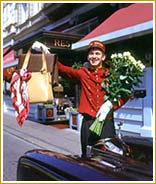 |
| Guest Rooms | |
105 rooms and suites, all individually furnished with antiquities and decorated with original oil paintings. All
105 rooms and suites have been completely renovated and improved in the course
of the last few years and have been equipped with state-of-the-art technology.
No two rooms are identical. Every room and every suite has been decorated personally
by the Managing Director Ms Elisabeth Gürtler with great love of detail.
All rooms are decorated with valuable historical paintings and antiquities rendering Hotel Sacher Vienna simply incomparable. |  |
| Gastronomy | |
| Our Executive Chef Jaroslav Müller
on the menus of the "Anna Sacher" and the "Rote Bar" restaurants
combines international and typically Viennese cuisine. The cosy meeting place
at the heart of the Hotel – our "Blaue Bar". At Café Sacher and the Sacherstube we will treat you to Viennese coffee-house specialities. | 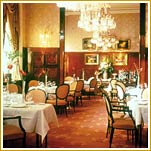 |
| Location | |
| From
Vienna Schwechat Airport: A4 Vienna-Centre direction – follow Schüttelstraße – Untere Donaustraße, cross Aspernbrücke on the left in the centre-bound direction – "Urania" is located to your left – follow Stubenring – Schubertring – Kärntner Ring – turn into Kärntner Straße right before the State Opera builing – drive up to the pedestrian zone – turn left – Hotel Sacher Wien is to your right. From the Southern Motorway: A2 up to the Inzersdorf intersection – Triester Straße exit towards Zentrum (City Centre) – via Margaretengürtel on to Matzleinsdorfer Platz, there turn into Wiedner Hauptstraße – cross the next two crossings – short detour via Mayerhofgasse to the right – Favoritenstraße left (follow sign towards Zentrum) – cross Ring into Kärnter Straße - drive up to the pedestrian zone – turn left – Hotel Sacher Wien is to your right. From the Western Motorway: Exit Motorway in the Zentrum direction – always carry on straight following the Zentrum signs – Schönbrunn Palace is en route to your right – cross Gürtel – carry on on Rechte Wienzeile – straight after Kunsthalle turn left into Kärntner Straße – cross Ring (to the right of the Opera House) - drive up to the pedestrian zone – turn left – Hotel Sacher Wien is to your right. |
|
| Other Hotels in Vienna | |
| Weather | |
|
|
|
Site
Map
© palaceweb, 2003 |
